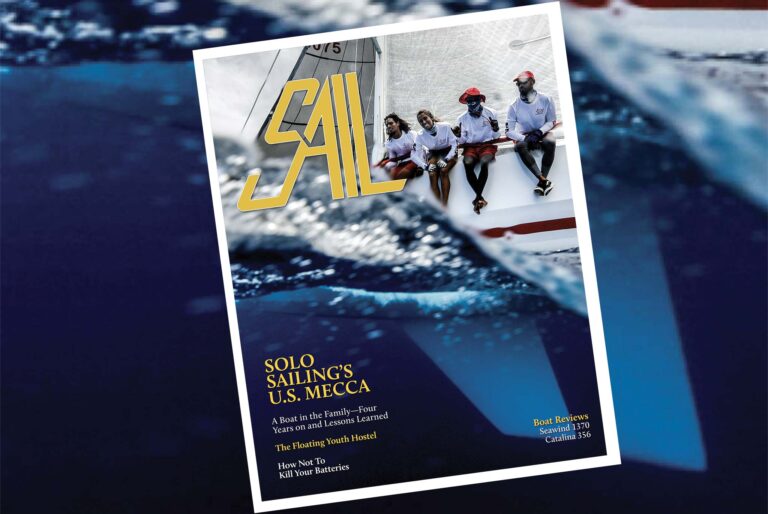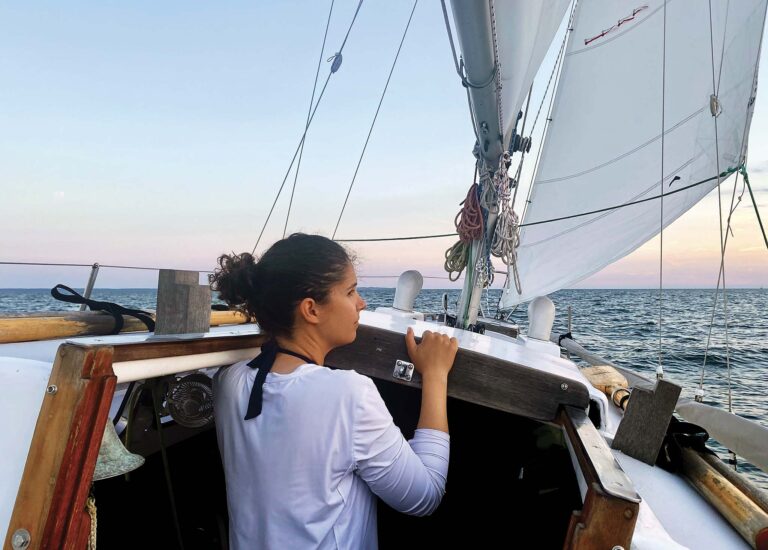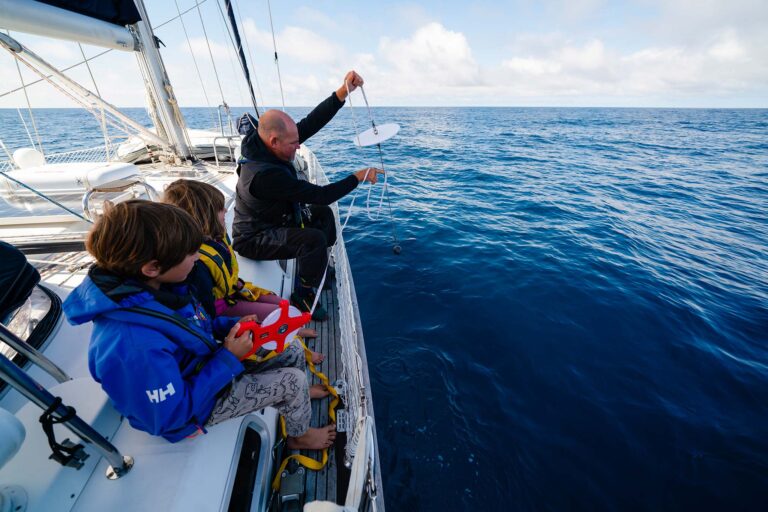If it’s true that gentlemen never sail to weather then what the hell am I doing here, I wondered as my knees slammed into the foredeck at the trough of yet another wave. Four of us were pulling down the big headsail and stuffing it into the forward hatch while tethered to the big former Whitbread Race winner Alaska Eagle. We were pulling Gs on the way up, and were airborne on the way down, and it occurred to me that we would hang off the jacklines like so many tea bags if we were ever swept under the lifelines.
The notorious Baja Bash is a West Coast phenomenon, usually left to paid delivery captains or unfortunate cruisers who need to get out of Mexico before hurricane season nullifies their insurance. An unavoidable trip for anyone returning to San Diego from Los Cabos, it is the flipside of the downwind Baja Ha-Ha rally, which takes place each fall. The calmest weather is in November and December, but most cruisers make the run north at the change of the seasons in April and May. It’s the ultimate bad plan: sailing to weather against prevailing winds and seas along 800 miles of open coastline. With a strong engine and some cooperation from the wind gods, it’s possible to do it in 10 days.
Traditional wisdom dictates that boats headed north should hug the coast to avoid a thrashing. The tactic is to run when you can, hide when you have to and don’t even try to keep a schedule. The goal is to make headway whenever possible, even if only in short spurts, because if you wait for a two-week weather window in the Pacific, you’ll be waiting a while.
With a reef in the main, we motorsailed the first part of our delivery from Cabo to Turtle Bay, about halfway to San Diego, where we ducked in for a night’s rest. Turtle is the only stop between Cabo and Ensenada where you can get fuel, provisions and medical care (if necessary). The second half of the trip started out much like the first, as we ran the rhumb line, staying four to 40 miles off the coast, and avoided the capes with their contrary 2- to 3-knot currents. For a total of eight days, we enjoyed “Lake Pacifica” conditions, when the ocean is flat, the coast appears gray and featureless in the distance, and the nights are black except for the stars reflecting off the water below. Even the radar stayed mostly blank until we got closer to the U.S. border. Pushing along under motor into the blackness, it was like riding a giant worm through outer space.
Although most of our trip was uncharacteristically quick and easy, the Bash wasn’t going to let us pass without a fight, and the last day served up 30-35 knot headwinds and 20-foot breaking seas. Spray was everywhere, and with the screaming wind, we couldn’t hear from one end of the 65-foot boat to the other. On the bow, every other wave sent a cold rush of saltwater down my foulies, and I couldn’t help chuckling, remembering the advertisement that said they were “breathable.” I was barely breathing, much less my clothes.
It was the last but longest 90 miles of the trip, a reminder of how hard the entire passage could have been—and often is—a long and harsh slog, and an indelible lesson in how to sail upwind and almost avoid a beating.










